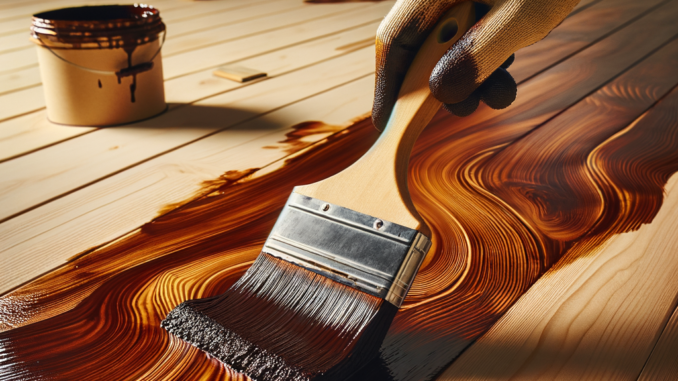
Timber floors offer timeless elegance and warmth to any space, but to truly elevate their appeal and longevity, timber floor staining emerges as an essential technique. In this comprehensive guide, we delve into the nuances of timber floor staining, from selecting the right stain to maintenance tips that ensure lasting beauty.
Timber floor staining isn’t just about aesthetics; it’s a crucial step in preserving and enhancing the natural beauty of wood floors. Whether you’re refurbishing an existing floor or installing a new one, timber floor staining adds depth, character, and protection.
Choosing the Right Stain
The first step in the staining process is selecting the right stain for your timber floor. Considerations such as wood type, desired color, and level of protection play a significant role in this decision. With a plethora of stains available, from oil-based to water-based and everything in between, it’s essential to understand the differences and choose wisely.
Preparing the Timber Floor
Before applying the stain, proper preparation of the timber floor is paramount. This involves sanding to create a smooth surface free of imperfections, ensuring optimal stain absorption and a uniform finish. Additionally, thorough cleaning to remove any dust or debris is necessary for optimal results.
Application Techniques
The application method can significantly impact the outcome of timber floor staining. Whether you opt for brushing or spraying, each technique has its advantages and challenges. Achieving even coverage is key to a professional-looking finish, requiring patience and attention to detail.
Drying and Curing Process
Once the stain is applied, allowing sufficient drying and curing time is crucial. Rushing this process can result in uneven coloration and premature wear. Understanding the ideal conditions for drying and the importance of proper curing ensures the longevity and durability of the stained floor.
Maintenance and Care
Proper maintenance is essential to preserve the beauty of stained timber floors. Regular cleaning with appropriate products and techniques prevents dirt buildup and maintains the integrity of the finish. Additionally, using furniture pads and promptly addressing scratches or damage prolongs the life of the floor.
Benefits of Timber Floor Staining
Beyond aesthetics, timber floor staining offers practical benefits. Enhancing the natural grain and color of the wood elevates the ambiance of any space, while the protective layer provided by the stain increases durability and resistance to wear and tear. Moreover, stained floors add value to your property, making it a worthwhile investment.
Environmental Considerations
For environmentally conscious consumers, choosing eco-friendly stain options is imperative. Opting for water-based stains and products with low VOC emissions minimizes environmental impact and ensures healthier indoor air quality. Additionally, adopting sustainable maintenance practices contributes to a greener approach to timber floor care.
Cost Considerations
While the cost of timber floor staining varies depending on various factors such as the type of stain, the size of the area, and labor costs, it’s essential to consider the long-term benefits. Investing in quality staining products and professional installation may incur higher initial expenses but can result in significant cost savings over time through improved durability and reduced maintenance needs.
Conclusion
Timber floor staining is not merely a practical necessity but an art form that enhances the beauty and durability of wood floors. By understanding the staining process, choosing the right products and techniques, and implementing proper maintenance practices, you can enjoy stunning, long-lasting floors that enrich your living space for years to come.